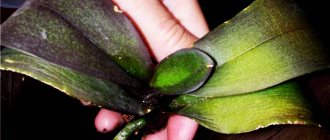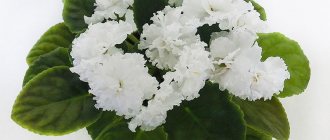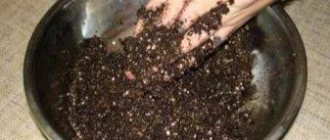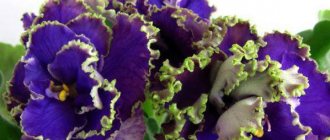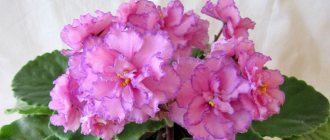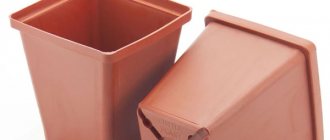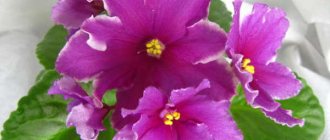Characteristic
This violet variety was registered back in 2001. This variety is distinguished by large blue flowers. She was bred by a breeder named Konstantin Morev. It is noteworthy that the creator described his creation as “large double blue stars with a white border.”
The homeland of all violets can be considered East Africa , or rather one of its provinces, in which there was a governor named Saintpaulius. Today there are more than 2,000 varieties of these unusual flowers, so it is very difficult to say which specific geographic area the new varieties belong to.
Blue mist (violet) has a heavenly hue, hence the name
However, when creating a microclimate, it must be taken into account that plants prefer dry air.
Blue mist is a violet (photos show the variety of these flowers), which belongs to the category of a large variety. The outer part of the leaves can be of different shades - from light to rich green. The inner surface is usually lilac in color, but sometimes it is light green.
Blue Mist inflorescences have a beautiful heavenly hue. The flowers are large, spherical in shape. A wavy border runs along the edge of the petals; usually its color is a shade lighter than the main flower.
Violet flower stalks are very strong and rise above the leaves. On each peduncle, 3-4 large buds are formed, which bloom quite quickly. When Saintpaulia blooms in summer, the color of its flowers changes to soft blue, and the border becomes more saturated.
Then the border gradually disappears and appears again with the onset of cold weather. With the beginning of winter, the usual appearance of violets returns. During the propagation process, this variety often sports.
This means that new so-called subspecies are appearing, which can be divided into several groups:
- Variegated Violet Blue Mist. The flowers of this subspecies are darker in color, the border is very thin, white. The leaves are usually the same as those of the original violet of this variety, but sometimes they appear variegated with a light green color, which is how the subspecies got its name.
- Completely blue. This subspecies is distinguished by more elongated cuttings, which usually do not form a bush, but stretch upward. The flowers of this variety are completely blue, the same in shape as the original, but without the characteristic border.
- White with blue (Fantasy). This subspecies is almost no different from the original, especially in rosettes. The only difference is the colors, which can be white or slightly bluish. There is no border as such, but you can see unusual chaotic patterns on the petals.
Together with Blue Mist, you can grow other varieties of border-type violets, which will create more interesting compositions.
| Variety of fringed violet | Peculiarities |
| Compass roses | Violet flowers are more reminiscent of delicate roses of pale pink color. Closer to the edge of the petals, the color becomes more saturated. The edging is crimson, slightly green in places. |
| Natalis Estravagante | The variety is distinguished by unusual lace flowers of pale pink color. The border can also be pink (but more saturated), green or chocolate. The leaves of the violet are green, but closer to their edges you can see streaks of pink and white. |
| Beautiful Creole | Violet has an unusual appearance, is unpretentious, and prolific. The socket is compact. One plant produces many small, velvety, star-shaped, dark blue flowers. A contrasting white edge runs along the edge of each petal. The stems are burgundy in color. |
| Macho | A variety with fairly large semi-double flowers that form a lush head. Star-shaped corollas of Saintpaulia. Each petal has a visible bright white border. |
| Modern Talking | Violet is distinguished by semi-double white flowers with a pink-blue-violet border. Outwardly, they are very reminiscent of pansies. The leaves are light green, flat. |
Violets get along well with other plants, so there are no restrictions in this matter.
Senk's Blue Cascade, or Blue Cascade
Photo of Senk's Blue Cascade violet.
A trailer that belongs to semi-miniatures . The flower is a blue wasp with a white underside.
The foliage is variegated , especially when young. The variegation is pink, the leaves are rolled into a tube . Over time, the tubes straighten a little, but the leaf is not completely open.
In cool weather, variegation appears better. In warm weather, the leaves become greener, but the violet begins to produce active and rich flowering.
This variant of the leaves may be due to the lack of sufficient light.
Takes good stepson. Young leaves are pink and completely curled into a tube. If there are a lot of leaves, then they are removed little by little so that the rosette is more even. If there are no lateral stepsons, the top can be carefully cut off.
The bush grows quickly , produces a long stem, which turns into a palm tree if regular replanting is neglected. Also, sometimes after transplantation, variegation often appears well.
The genetic mutation manifests itself as a complete absence of curled leaves and variegation.
Despite the variegation, this is a sport because the leaves must be curled.
Flower sport.
The plant loves a sufficient amount of light , the leaves are arranged very picturesquely and resemble a cascade. If the stem begins to bend, the bush is placed under a lamp so that it stretches and straightens out.
Reviews
Marianna, Odessa. “The bush is beautiful; at a young age there was pink-golden variegation, but it disappeared. Now it has bloomed.”
Elena, Moscow. “The variety is not very generous with stepsons. I couldn't wait and pinched the top. After that, the side stepchildren climbed up very quickly. The flowers are not blue, but bright blue.”
Preparation of planting material and propagation
Blue mist (violet, photos of which prove the enormous diversity of this variety) is grown by propagation, that is, by pinching off a healthy leaf from another flower. However, seeds can also be found on sale. It is recommended to purchase such planting material only in specialized stores or trusted markets.
Otherwise, there is a risk of getting a violet of a different variety and shade. You also need to pay attention to the expiration date of the seeds. If they have been in the store for more than 2 years, they may not sprout.
For propagation you need to use strong, healthy and well-developed leaves. When using them, there is no need to carry out a disinfection procedure or other preparatory measures.
Features of growth, flowering and reproduction
The variety is very capricious, develops slowly , like all varieties with crown variegation.
Young children are separated from the mother plant only after a sufficient amount of green color appears on the leaves. Otherwise they may die.
It often takes more than 12 months to grow a new plant from leaf If the conditions are not the most favorable, the violet may not bloom.
The first flowering is possible no earlier than reaching the age of one year.
Varietal characteristics are transmitted well, mutations are rare . Most often these are rosettes with no variegation. They are noticeable almost immediately, such specimens are eliminated immediately.
You can also propagate violets using lateral shoots. But Little Caboose is not prone to excessive side shoots. Such stepsons can appear on a stump if you cut off the top of the rosette. They can be rooted and planted in a pot.
The variety often blooms in a compact bouquet . If you take good care of the violet, it does not skimp on flower stalks and produces long and abundant flowering. To get the desired result, it is worth providing the plant with ample lighting.
The peduncles are strong, hold the flowers well , but some time after the bud opens they lengthen a little and can fall on the rosette.
It blooms for a long time , the buds open slowly and do not dry out for a long time. The plant constantly produces flower stalks and produces long-lasting flowering.
Little Caboose has a long flowering period.
The socket should be kept for no more than four years . After this, it is worth rejuvenating it or growing a new plant from a leaf.
Preparing the soil and planting site
Particular attention should be paid to the correct soil mixture. In order for the flower to be strong and constantly delight with large inflorescences, the soil must be sufficiently loose and moisture-absorbing.
The substrate is prepared from 3 parts grain soil, 5 parts peat and 1 part sand. Or you can purchase a ready-made mixture in the store. It is recommended to choose only the substrate that is intended specifically for violets. It is also sold in any specialized store.
Violets feel best in plastic or ceramic pots. The first option is considered the most popular, since the plastic weighs little, does not oxidize and has a long service life. But it must be taken into account that air is not able to pass through such material.
There are more expensive, breathable pots on the market. Or you can prepare a plastic container yourself (it is important not to forget to make drainage holes). Typically, cut plastic bottles are used to plant leaves for propagation. After this you will need to select another pot.
Ceramic, clay and terracotta are breathable and are optimal for Saintpaulia. If the pot was previously used for another plant, then you need to wash it well in soapy water and dry it.
The best pots for violets are plastic
Since the surface of the material has a porous structure, salts can be retained in it, which are visible by characteristic stains. To get rid of them, you need to soak the containers in warm, soapy water for several hours.
You also need to decide on the size of the pot. If the container is very deep, then the violet will begin to form a very powerful rhizome. It requires more nutrition, which will lead to the formation of smaller flowers. Some violets stop blooming altogether in this situation.
A pot that is too small, on the contrary, will not be enough for a normal root system to develop in it. To choose the right container, you need to remember one simple rule - the pot should be slightly smaller than the top of the plant and then it will be the optimal size.
Landing algorithm
Violet Blue Mist, if you look at almost any photo or video instruction, is planted in the form of leaf cuttings that are prepared in advance. In order for roots to begin to grow on the cuttings, it is enough to select a large leaf of the 2nd lower tier of the mother plant.
Violet Blue Mist - propagation by cuttings
For it to take root, you need to pour a small amount of water into a dark container and put an activated carbon tablet in it. After this, it remains to lower the planting material into the water so that only its tip is in the liquid.
After a few weeks, full-fledged roots will form and it will be possible to plant them in the ground. If everything is done correctly, then within a month the plant will begin to actively develop and bloom. For some, I immediately plant the cuttings in the soil, where they take full root.
With this method, you need to ensure that the planting material does not fall. The easiest way to do this is to secure it with toothpicks. Additionally, the cuttings can be covered with polyethylene. This will speed up the plant development process. Usually, there are no problems with planting and propagating violets, but you need to remember some rules of care.
Saintpaulia Rob's Smarty Pants or Sworn Wit Pants
The variety was registered in May 1997. The socket is miniature. The foliage is wavy and has a good gloss. There are teeth along the edge of the leaf blade. Always forms an even rosette , but the leaves bend down, this is a feature of the variety. The size of the outlet does not exceed 12 centimeters.
The star flower is white with a light pink fringe around the edge. According to the author's description, the blue splashes should be located on the pink border, but often they appear inside the flower itself.
A plant with varietal characteristics has large white flowers with a light pink border and splashes of light fantasy blue along it.
Each flower is unique . The drawings are not repeated. There are brighter and more delicate options. The diameter of the bud when fully opened reaches three centimeters. The peculiarity of the variety is that with age the fantasy inclusions become less and less, and over time they completely disappear.
Violet blooms often and abundantly, but a lush bouquet is rarely obtained . The buds last a long time, but there is no lush, dense bouquet. Peduncles are tall and thin. The flowers hold well, but are directed in different directions.
The variety is easy to maintain . The leaf cuttings take root well and produce many offspring. But at the same time, young plants do not always retain varietal characteristics.
Several official sports have been recorded from this variety. These are Rob's Ice Rippies (R. Robinson) and Rob's Itchy Britches (R. Robinson).
Rob's Ice Rippies (R. Robinson).
Rob's Itchy Britches(R.Robinson).
More sports options
Features of flowering, growth and reproduction
The violet takes root well , grows and develops quickly. The leaf takes root well and produces many children. But a significant part goes into sports. The tendency to genetic mutations is very high.
Depending on the conditions, a full-fledged plant can be grown in 8-10 months. Like all violets, it does not like heat. In such conditions, the flowering period is shortened and it may darken.
The peduncles are thin and tall, but the flowers hold well. It is impossible to achieve bouquet flowering, since all the flower stalks stick out to the sides. It turns out to be a cute dishevelment. The bud blooms from 2 to 4 weeks. Flowering is long, periods between flowering are short.
Reviews about violet
Marina, Moscow : “The Rob's Smarty Pants variety is exactly the same as Rob's Itchy Britches. The only difference is the variegation. I don’t see the point in keeping both plants in the collection; you should choose only one.”
Maria, Ryazan : “This plant resembles a pink cloud. In the second flowering, my rosette produced semi-double stars. It’s a very delicate variety, doesn’t take up much space, and doesn’t create any problems.”
Care
Violet is undemanding, but requires standard care (especially with regard to watering rules and lighting conditions).
Spraying and watering
It is recommended to water violets through a tray. After water is poured into it, you need to wait 20 minutes and remove excess moisture. Fertilizers are applied using the same principle. There is another method of watering called wick.
It consists of placing the lace in a pot and bringing the other part out, lowering it into a container of water that will stand just below the level of the flower pot. In this case, replenishment will occur exactly when the plant needs it.
Another advantage of the method is that excess moisture is not formed, which often causes diseases in domestic plants. It is allowed to apply fertilizing using the wick method. But in this case, you need to reduce their concentration by 7 times.
Violet Blue Mist should be poured through the tray
The grower must also decide on the frequency of watering, which depends on several parameters:
- pot dimensions;
- ambient temperature and time of year;
- air humidity;
- depends on how long the plant has been blooming and on the condition of its inflorescences.
Violets need increased watering in the spring. At this time, it accumulates energy in order to form large and beautiful buds. In the cold season, it is better to water it less often to avoid waterlogging. You can tell if you are watering too often by looking at the leaves. Dark spots appear on them. This indicates that the root system has begun to rot.
There is a small pile on the leaves of Saintpaulia. Dust often accumulates on it. Therefore, you need to wash the leaves at least once a month. To do this, just place the pots of violets in the bath and pour a warm stream of water from the shower.
Water violet leaves in a trickle
No special drying is required. You need to wait until the water drops dry on their own and then you can move the plants back to the windowsill, exposing them to the sun. For irrigation, you can use exclusively raw tap water, which is pre-settled at room temperature.
It is better to water in a thin stream so that water does not fall on the leaves (especially if the weather is hot and the sun is shining brightly). The frequency of watering is 1 time every 3 days. You also need to periodically check the soil and moisten it as it dries.
Top dressing
Blue mist is a violet (photos of the variety are presented in the article), which may require additional nutrition. The first feeding is done 30 days after the flower has been transplanted. During this period, Saintpaulia requires additional microelements, which are necessary for full growth and flowering.
As a rule, Kemira Lux or Royal Mix fertilizers are used for this indoor plant. But other fertilizers intended for violets and gesneriaceae are also suitable. Some people use specialized Peters fertilizers.
Before using fertilizers, you must carefully study the instructions. As a rule, manufacturers indicate too high a dosage, which can be safely reduced by 2–3 times. This will allow you to fertilize a little more often, especially when the plant begins to bloom.
During this period, violet needs phosphorus and potassium, which are very important substances for proper budding. Fertilizer is applied only to moist soil. Otherwise, you can cause serious burns to the violet root system. Preference should be given to liquid or powdered fertilizers added to the water when watering.
If the plant does not have enough nutrients, then you can use liquid organic matter or sticks with feeding mixtures. Fertilizers can be applied for the first time already at the first flowering. You should not use too much fertilizer.
Especially if the soil mixture for growing violets was prepared according to all the rules or purchased in specialized stores. Such mixtures contain enough nutrients for 2-3 months. After this, you can move on to additional feeding.
In order for rosettes to develop better, you need to choose fertilizers based on nitrogenous substances. Potassium compounds are used to protect against diseases. You can also find ready-made complex formulations that contain all the necessary substances in the required proportions. They must be applied according to the instructions on the package.
Topping
It is necessary to pinch out leaves that look limp or have already died. As a rule, they are located at the very bottom and are practically in contact with the soil. You also need to promptly remove wilted flowers. Thanks to this, the plant will not waste its energy on almost dead parts. No additional pinching measures are required.
Transfer
Blue mist - violet (there is a photo of the plant processing process in the article) needs to be replanted when the root system of the plant develops so much that a larger pot is required.
When carrying out such an event, it is necessary to maintain the room temperature within 20-25 ° C, and the humidity should be 40-50%. It is best to repot in the spring, when the violet has enough sunlight to adapt to the new pot.
There are several ways to perform this procedure:
- Transshipment. Needed in a situation where the plant needs urgent replanting. To transfer, you need to remove the flower along with the soil clod from the pot. The new pot needs to be filled 1/3 with drainage. A flower is placed on it with a lump of earth. The indentations on the sides are filled with fresh soil mixture.
- Complete replacement. In this case, you need to thoroughly clean the roots from the old soil and remove all rotting parts. After this, the plant is placed in new soil.
After the procedure, it is necessary to water the plant and place it in a lighted place (preferably where the violet stood before transplantation).
Optimal conditions
If you provide the plant with proper care and prepare quality soil, it will bloom for up to 10 months a year. In addition, there will be significantly more colors. The advantage of this variety of violet is that even if it is very young, it already forms a beautiful blue cap in the first years of its life.
To do this, you need to adhere to a temperature regime of 20 to 25 ° C and avoid drafts, even short ones. It must be taken into account that this culture came from a hot country. But the violet leaves are quite fleshy and tender. Therefore, it is additionally necessary to provide shading or they may become sunburned.
It is also important to monitor the humidity level. It should be between 50 and 60%. If you decide to illuminate the plant, it is recommended to use only fluorescent lamps. It is important to maintain a distance of 25 cm between the light source and the plant.
Home care
Violets grow in a pot of five. They take root well and develop quickly. They do not create problems in cultivation. Can be kept on a wick.
Proper watering and fertilizing
Miniature Saintpaulias Rob's Smarty Pants and Rob's Itty Bitty grow successfully on wick watering. Top or bottom watering is also possible, but in this case you should carefully monitor the condition of the soil . Excessive drying out or waterlogging can lead to the development of diseases or death of the plant.
If the soil is too wet, the violet roots will rot.
If a situation arises that the violet is very dry, then it should be soldered little by little , in small portions, but often. This is the only way to revive a wilted plant.
If the soil is wet and the violet leaves are limp, then this is a sign of waterlogging. This means that the roots have already rotted, and only a miracle, namely re-rooting, can save the rosette. In this case, the top of the rosette should be cut off and re-rooted.
Care should be taken with fertilizers . Excessive nitrogen concentration can cause side shoots to grow and reduce flowering.
At the first signs of flower stalk formation, potassium and phosphorus begin to be added.
Lighting and air temperature
Lighting should be diffused . The plant should not be exposed to direct sunlight. If the violet begins to thicken the center of the rosette, then it should be placed in a less lit place. When it's too dark, the rosette lifts the leaves up. Daylight should last from 10 to 12 hours a day.
Optimum temperature + 18-12 C0. It is possible to keep it at lower temperatures, but in this case the growth of the plant will slow down significantly. At elevated temperatures, the violet will darken and float.
It is very important to avoid drafts and temperature changes.
How does air humidity affect
Humidity levels should be within 55%. Too dry air is favorable conditions for the existence of thrips, and with high humidity, fungal diseases begin to develop on the surface of the leaves.
Soil composition
The soil for miniature Saintpaulias should contain a minimum amount of organic matter , since this can lead not only to the growth of the rosette, but also to excessive formation of lateral stepsons.
Pruning and hygiene
Caring for violets involves timely removal of side shoots and dried flower stalks. there is no need to trim yellowed leaves from the plant too often . The main thing is to prevent the presence of several growth points.
Methods of propagation of the variety
Propagated by cuttings and side shoots. If it works, then you can root the peduncle. In this case, the likelihood of going into sports is minimal.
Rules for transplanting and plant rejuvenation
The violet needs to be replanted approximately once a year. It is best to do this during the breaks between flowering in early autumn or late February. The plant is carefully removed from the pot, the old soil is shaken off and transplanted into a clean container and fresh substrate. No fertilizing is applied for two months.
Possible diseases and pests, ways to get rid of them
Violet Blue Mist can suffer from certain diseases and parasites:
- Spider mite. This insect attacks many indoor plants, including violets. The danger of spider mites is that they multiply and spread very quickly.
Its presence can be determined by the appearance of a sticky coating on the leaves. Some people wash plants with soap to combat it, but it is best to purchase a specialized product (for example, Fitoverm or Actellik) against this type of parasite.
Fitoverm helps get rid of spider mites
- Whitefly. As a rule, it appears on plants if the room humidity and temperature are too low. To control insects, you need to use a general insecticide.
- Mealybug. It is dangerous because it sucks the juices out of the plant, which is why it gradually withers, stops growing and may even die. To get rid of it, the most effective remedy is a soap solution.
- Powdery mildew. The development of the disease can be determined by the appearance of a white coating on the leaves of the plant. You can get rid of powdery mildew by treating it with a fungicide.
- Fusarium. When this disease develops, the violet can die very quickly. It is very difficult to identify fusarium in a timely manner, since the root system of plants is primarily affected.
As a rule, when the disease spreads to the foliage, it is too late to do anything. If the lesion has not yet reached the leaves, then you can cut off the entire healthy above-ground part of the flower and try to grow it again.
Peculiarities
When growing Blue Mist violets, you need to take into account that this variety was bred artificially. This means that it has some characteristics that distinguish it from other plants. For example, Blue Mist can bloom in 10 months, while a regular violet rarely forms buds for such a long time.
It is believed that this variety is optimal for beginning flower growers, as it is unpretentious and its flower stalks are highly resistant. In addition, it is worth highlighting the very beautiful appearance of the flowers.
There are other advantages:
- Hypoallergenic. Violets do not produce pollen, which will make some household members feel unwell. However, in case of severe asthma, you should first talk to your doctor and find out if you can grow such flowers at home. Due to its hypoallergenic nature, Blue Mist is perfect for a child's room or bedroom.
- Additional purification of indoor air. Violets perfectly cleanse the surrounding atmosphere of harmful substances. This improves the microclimate of the entire house.
In addition, flowers of this type are able to absorb a variety of impurities contained in the air (for example, exhaust gases from the street). The violet releases oxygen. Therefore, the air is enriched. You can sleep much better in such rooms. But if the flowers are in the shade, then the reverse process begins, that is, carbon dioxide is released.
- Repelling ants. Insects often settle in apartments and it is very difficult to get rid of them, since just a few drops of water from the tap are enough for the ants to begin to actively reproduce. But they really don’t like violets and cannot be near them.
- Beneficial effect on the nervous system. Although violets do not have a distinct aroma, keeping them indoors makes it much easier to cope with stressful conditions. Some note that after growing Saintpaulia in a children's room, children become calmer and less capricious.
Blooming violet Blue mist becomes an excellent decoration for a room and a “living” background for beautiful photos. If you combine it with other plants, you can create a very unusual home flower bed. Growing these flowers does not require much effort. Thanks to rapid propagation by cuttings, you can quickly organize a real flower garden.
Saintpaulia Rob's Itty Bitty or Tiny Motley
The Robs Itty Bitty variety was registered in July 1998.
The rosette is miniature , smooth, with beautiful neat leaves. Formed without outside participation. The underside of the leaf is red. On a tiny rosette, the flowers seem simply huge.
Photo of Rob's Itty Bitty violet.
The flower is a semi-bellflower, but some gardeners define its shape as a star. Can be single or semi-double . The color varies from delicate to rich pink. The same rosette can produce flowers of different colors depending on age. Over time it gets a little darker and gets brighter.
Gives constant abundant flowering. Always forms a dense cap. Can produce continuous flowering.
It is not prone to genetic mutations, but can sometimes distort the shape of flowers.
Features of growth, flowering and reproduction
Violet is problem-free and grows quickly and well at home. It forms a rosette on its own; all you need to do is plant it, feed and water it on time. The leaves are hard, like plastic.
An adult plant grows in 8-10 months. Always forms a full bouquet. The peduncles are low, strong, and the flowers hold well. The underside of the leaf and peduncles are brownish-red.
The variety is propagated by leaf cuttings. It produces a sufficient number of children , does not mutate, and varietal characteristics are passed on well to the next generation. You can also root peduncles or lateral shoots, if such form on the plant.
It does not react particularly to heat, but it is better to keep it cool. The increased temperature does not go away in sports, but it is prone to darkening with age. Young rosettes produce a slightly pale first flowering.
Reviews about violet
Evgenia, Dnepropetrovsk : “At an early age I constantly tried to form several heads. I had to keep an eye on him. But after he has matured, he gives out hat after hat. All are equally lush and dense. I grow it on a wick.”
Violetta, Voronezh : “I really like this variety. It grows independently, the size of the flowers is very large compared to the rosette. The color is not pink, but rather peach. Very beautiful contrast between leaves and buds.”
Anna, Samara : “It didn’t work out for me with this variety. All the children produced twisted leaves, and then ugly flowers began to grow. I probably got a defective version.”
